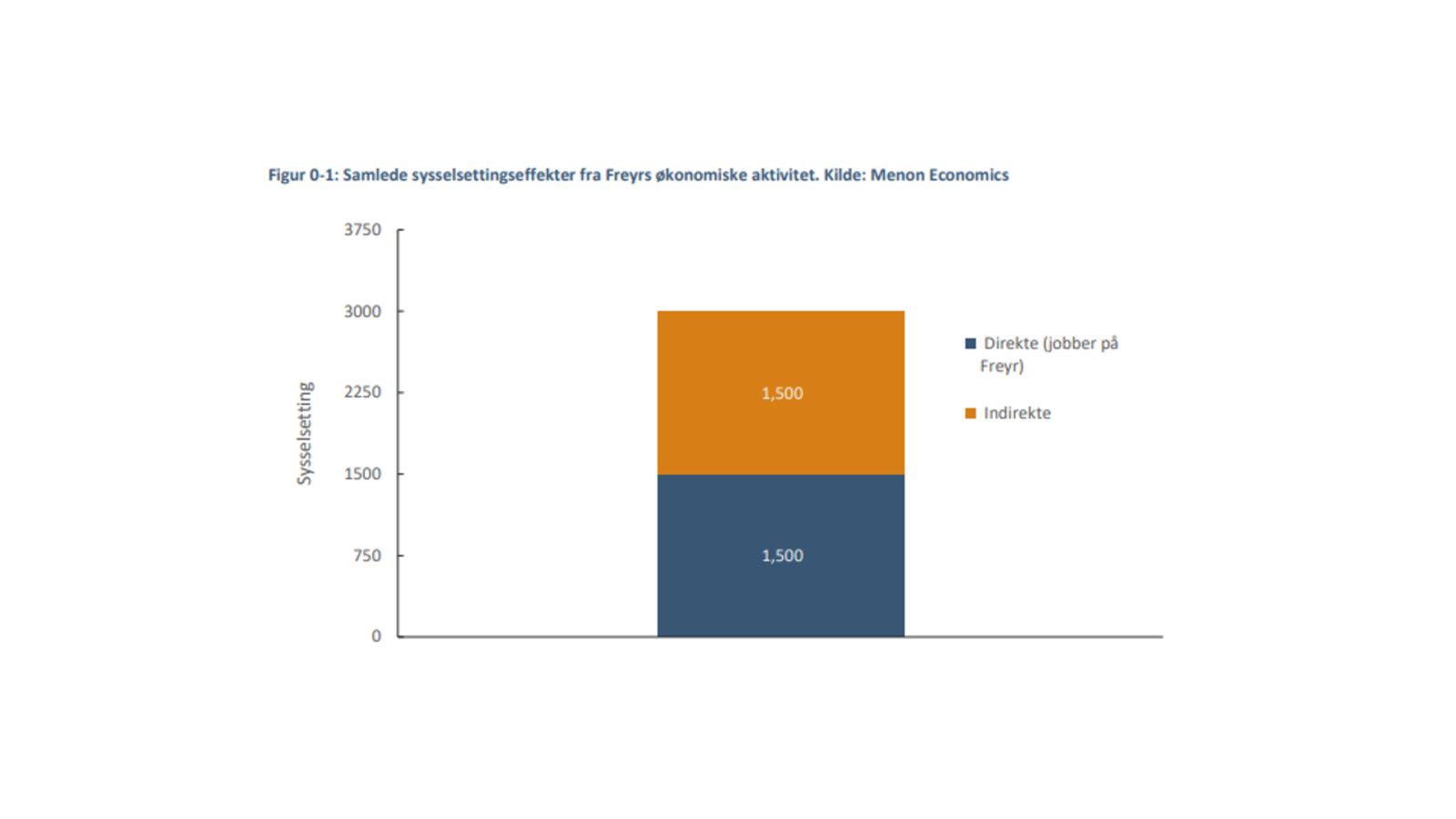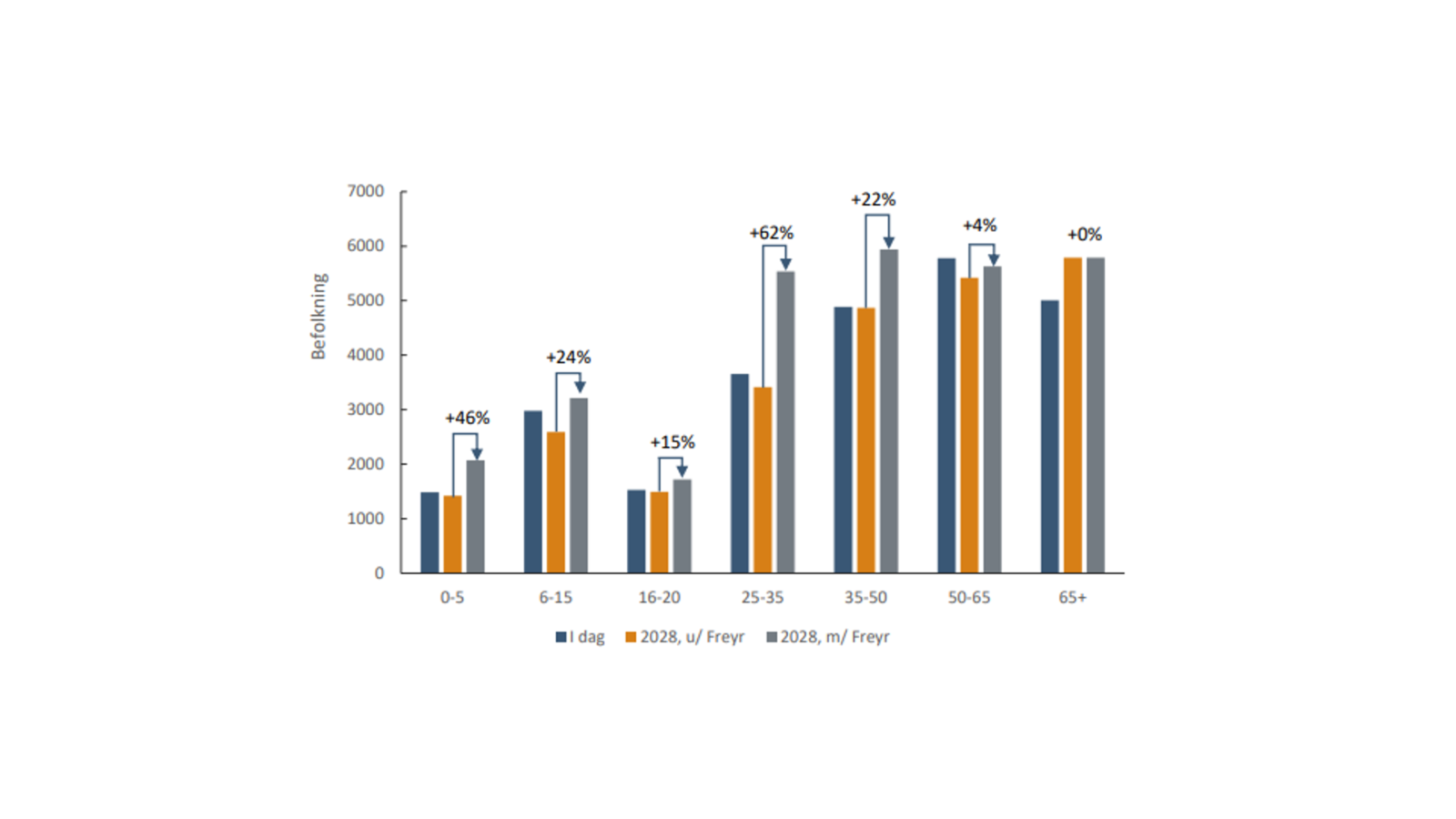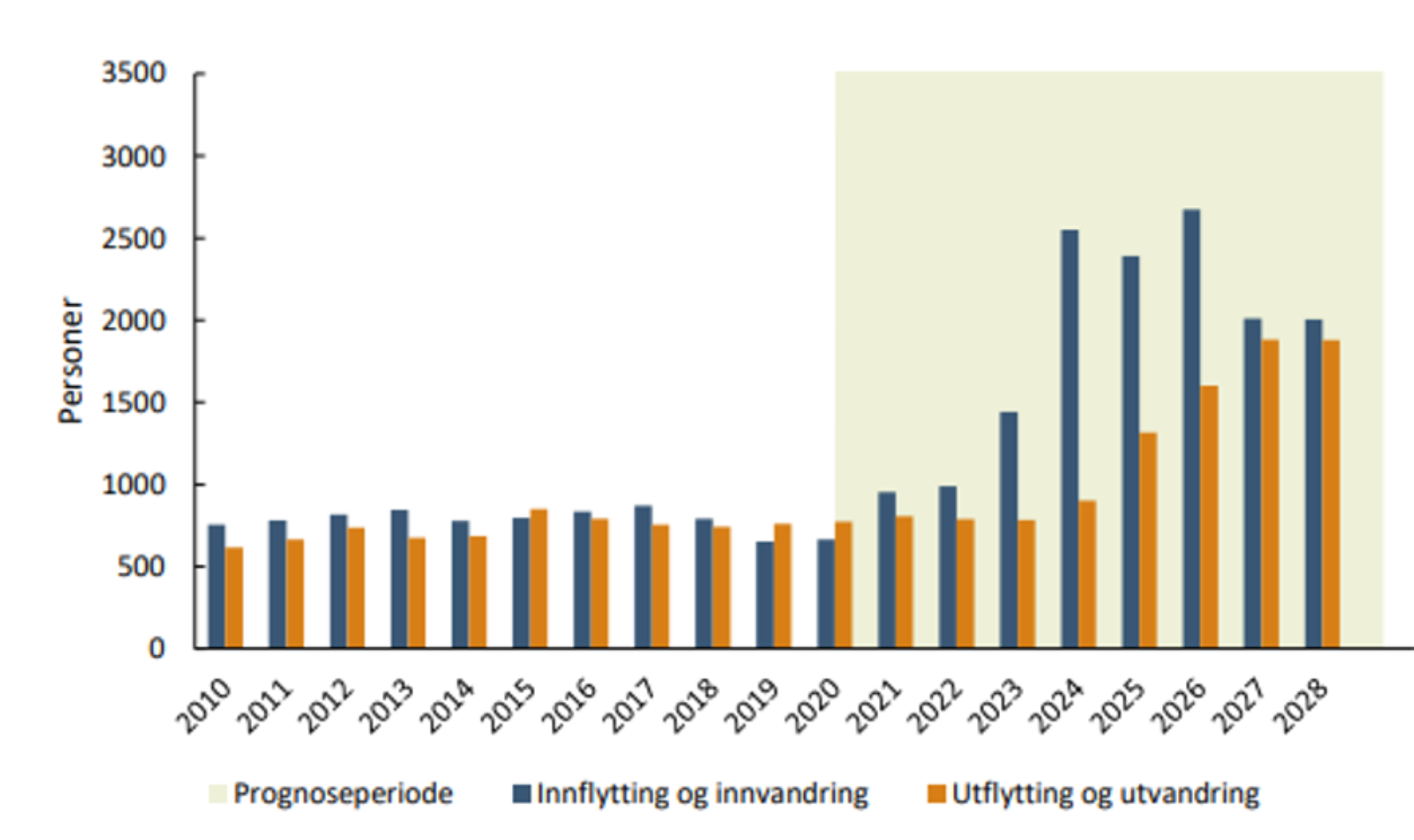Social impact assessment of Giga Arctic
In 2021 FREYR joined the local municipality Rana and the regional government, Nordland Fylkeskommune, in a tender for a social impact assessment made by a third party of both FREYR’s plans in Mo I Rana but also the accumulative effect of other large projects in the region over the same time period. The report is accessible through the link below but only in Norwegian. Some chosen parts of the summary is here translated to English:
“In connection with FREYR's establishment, Nordland County Council, Rana Municipality and Rana Utvikling have identified a need to prepare an analysis of the direct and indirect social effects linked to the establishment of the battery cell factories in Mo i Rana. The aim of the analysis is to function as a knowledge base that will contribute to the three actors preparing for the changes that FREYR's establishment will entail for the municipality and the county. In this report, we explain our analyzes relating to the significance of FREYR's establishment for employment and population development in Rana, as well as a number of other social effects. These social effects are:
• Housing market
• Education and skills
• Public finances and services
• Transport and transport needs
• Power requirement
• Environment
Below we explain the most important findings in each of these areas.
Ripple effects
The first step in the analysis was to calculate the ripple effects of the investment and operating phase for FREYR's planned battery cell factory in Mo i Rana. Based on Menon's ripple effect model, we estimate that the operation of FREYR's battery cell factories lays the foundation for 3,000 jobs in Norway. These are distributed between employees at FREYR and
indirect effects in the value chain as shown in the figure below with direct jobs expected to be created in blue and indirect jobs created in the district in orange.

Development in inhabitants
The 2,950 jobs will mainly be covered by increased immigration to Rana municipality, while a smaller proportion will come from increased commuting. However, many new arrivals will not come alone, but will bring both with them partners and children. We have developed a dedicated population model to assess these impacts. Our analyses indicates that the total population growth induced by FREYR will be around 5,000 people. Figure 0-3 shows population growth for different age groups. Dark blue is today, orange is without the establishment of FREYR in 2028 and the grey bars with FREYR establishment in 2028.

The greatest population growth will occur in the 25-35 age group. Here, FREYR's establishment will contribute to a population increase of over 60 percent. The group with the second highest population growth will be children aged 0-5 years, with a growth of 46 per cent, while the age groups 6-15 years and 35-50 years will see population growth in excess of 20 percent. As mentioned, the increase in population will mainly come through increased immigration, and immigration will increase dramatically in the coming years. The number of people moving to and leaving Rana is shown in Figure 0-4.

From 2010 to 2020, the number of people moving in and out of Rana has been in the range of 600 to 900 per year. As you can see -of the figure, around 1,500 people will move into Rana in 2023, and around 2,500 in 2024, 2025 and 2026. Also the number moving out is rising. FREYR will be a young company with many young, international employees, and thus have high turnover. After 2026, the number of people moving in will therefore remain high. This is because a high turnover increases the need for new labor in FREYR and the induced companies. Our analyzes show that the players in Rana and Nordland must prepare for a move-in equivalent to 3 times historical level during FREYR's establishment period, but also that there will be a period of high immigration thereafter the establishment phase, to compensate for turnover in FREYR and the other newly established companies.
The housing market
This analysis has clearly shown that the housing market is a key to the successful establishment of FREYR i Mo i Rana. To be able to attract workers from outside the region, it is essential that these have opportunities to get a job and a place to live. With the expected population growth in the municipality, it will be necessary to make significant changes in the pace of construction to accommodate the increase in housing demand. In 2021, there were 12,300 homes in Rana municipality and we estimate that housing demand will increase by 1,800-2,150 homes until 2030. We see that there will be the greatest need for new apartments. Furthermore, there will be a need for a significant number of rental units to ensure good recruitment opportunities.
Between 2007 and 2021, the number of homes in Rana has increased from 11,150 to 12,300. The net increase of 1,150 homes over the period corresponds to an annual increase of 77 homes in Rana municipality. We expect an overall increase in housing demand of 1,800-2,150 housing units in 2027, the construction rate in Rana municipality today is too low. If you continue the pace for completion of housing, it will take between 23 and 28 years to realize the housing that is expected to be in demand as a result of FREYR's establishment in Rana municipality. It is therefore clear that a change of pace is needed to reach the goal of completion.
The simultaneity of development and relocation is, however, a major challenge. Usually, banks require advance sales of 50-60 percent before starting a housing project. Advance sales at that level are unlikely in this picture. The actors are in agreement that challenges with housing construction can be dealt with, but it requires change. Solving these challenges require the parties to come together and look for concrete solutions. Developers and financial actors should come together to look at solutions that can free up sufficient funding. FREYR also has an opportunity to take an active role in ensuring that real estate projects are completed on time. It is also in FREYR's interest as access to housing is necessary to recruit.
Competence building
The capacity situation in Nordland today is such that the workforce required from FREYR in the first instance must be imported from other places in Norway and from abroad. There is a particular need for vocational school and vocational training which is expected to be large. However, a low share of local labor at the start-up does not mean that a long-term focus on the development of regional competence is less important for Rana and Nordland.
As an industry, battery production is experiencing strong technological growth. That means a central challenge to build up relevant, regional education courses is the uncertainty linked to future competence needs in the production of battery cells. Which expertise and the extent to which it will be in demand in the future will depend on, among other things
the type of battery produced, the scale of production, developments in technology and the degree of automation. This means that one of the most important tasks for the municipality, Rana Utvikling and the county council when it comes for competence will be to work actively and continuously with mapping the need for competence. This implies including participation in international forums, monitoring of external surveys, as well as continuous dialogue with FREYR and other manufacturers. Here it is particularly important that the region's vocational schools, upper secondary schools and colleges/universities become an integral part of the process.
Public Services
A key finding in our analysis is that although both the municipality's and the county's finances are relatively healthy and can cope with an increase in investment needs, there may be challenges related to timing. The system for municipal financing is structured so that the municipalities are only compensated for the increased expenditure requirement up to a year after that has risen.
The physical infrastructure, in the form of, for example, nursing homes and school buildings, is considered sufficient within both the health and care sector and in the education sector, so that an increase in demand can be met public services without large investments. To some extent, this is a function of the fact that demand has slowed over the last years. Recruitment of relevant labor can, however, pose a capacity challenge for the municipality. This is a situation that we are already in the middle of today. Virtually all actors we have interviewed point to that the most difficult part of the operation of today's public services is related to recruitment.
Transportation
The main sources of changes in transport needs in the Rana region as a result of FREYR's establishment are the increase in population and the transport of goods to and from the production facilities. Passenger cars are the most common means of transport in Rana and the load on the road system is currently high at certain main roads such as E6 and Fv 810. The amount of traffic in the road system is expected to increase by around 20 per cent as a result of underlying growth in passenger traffic per inhabitant and population growth as a result of the establishment, but the growth will not be evenly distributed in Rana. Especially on the E6 south of Ranaelva and Fv 810, increased traffic is expected.
These are stretches of road that already have capacity challenges and this will increase with population growth. With FREYR's establishment at Langneset, in addition to other new jobs there, there are also expectations that the corridor over the railway tracks at Langneset could become a bottleneck.
Energy Access
FREYR's establishment could result in a significant demand for network capacity in Mo i Rana, capacity per day date not available. Based on information about FREYR's impact needs as well as the other social analyses we estimate that power demand may increase by close to 130 MW up to 2026. FREYR alone accounts for 75 MW. Increased consumption will contribute to increased power prices in Northern Norway, all other things being equal. At the same time, it is a significant potential for developing profitable power production in Northern Norway in the coming decades. Realization of new renewable production capacity will both provide increased value creation in isolation, but also strengthen the region's long-term attractiveness for new industry.
Community preparedness and security
FREYR's establishment in Rana affects the need for community preparedness and security through two channels. Firstly FREYR's battery cell production entails a risk of unwanted incidents in production. This risk is among other things related to fire in battery cells, which in the worst case can spread, as well as to chemical damage. Secondly the establishment increases the population in Rana by an estimated 5,000. This will trigger an increased need for public emergency services and increased probability of contemporary events.
The municipality has prioritized staffing in the fire service beyond the minimum requirement. The increase in population will not trigger demands for increased staffing and the fire service in Rana has good capacity to handle it population growth. Hospital capacity is also considered sufficient to handle population growth. It is predominantly likely that the settlement in Mo i Rana will have more than 20,000 inhabitants by 2026, which will trigger increased requirement for response time for the police. FREYR's establishment will contribute to Mo crossing this threshold value which will trigger a need for resources in the police to be able to satisfy requirements for response time.
When it comes to the risk of accidents in production, chemical accidents and fire are the most relevant the risk elements. FREYR will produce battery cells with licensed 24M technology, which compared to conventional production technology probably involves less fire risk. It is still important to be prepared for unwanted events. The preparedness to handle an accident in production appears to be good for both the fire service and the healthcare system. Fire victims are stabilized locally and flown to Haukeland for further treatment. The knowledge of however, chemical damage must be updated, and capacity mapped at Helgeland Hospital. To take care of social security depends on a good flow of information to both the fire service and the health service so that emergency authorities have the knowledge and equipment to handle incidents that may arise in connection with FREYR's business. We recommend that you facilitate meetings with Nordland County Council, Mo Industripark, FREYR, Rana municipality and Helgeland hospital.
